El Camino del Cid: all the information you need to make this historic route
If I tell you that there is a path similar to the way of St. James, in which you can feel the nature, as well as the gastronomy, the history and the culture of Spain at the same time would you believe me?
Well yes, it exists! This is the Camino del Cid Campeador, a path that must be done at least once in a lifetime. Whether by motorcycle, by bicycle or on foot, all you have to do is to follow in the footsteps of the famous medieval hero. Follow our step-by-step guide to explore one of the stages that appear in the medieval epic poem of Spanish literature: The Song of Mio Cid! But first, choose your favourite means of transport.
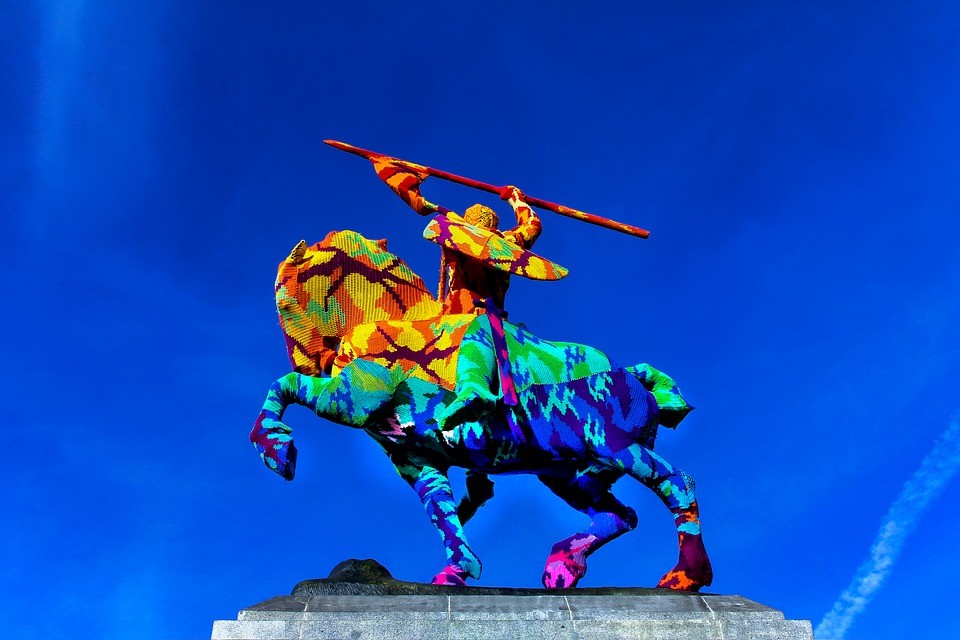
Who is the Cid Campeador?
Your tour guide for this wonderful trip is Rodrigo Díaz de Vivar, known as "Prince Rodrigo the Champion": the legendary figure of the Reconquest and the symbol of chivalrous virtues and moral integrity. The poem tells the final stage of his life, from his exile by King Alfonso VI, until his death, and he witnesses the trips he made in Spain: from the northwest to the southeast.
We start!
Making the Cid road by motorcycle: an experience you will not forget
If you are an active person and motorcycle enthusiast, but you are also interested in knowing the history of the places you visit, then you have to travel the biker route of the Cid road, and live a few days of adventure with your motorcycle following the tracks of the Cid Champion.
Choose an itinerary that allows you to travel the Camino del Cid in stages, discovering historical and literary places of great importance. Thanks to ours, which takes you from Ateca to Valencia, you can do it.
Day 1: Ateca - Sigüenza
We propose to start the itinerary in the municipality of Ateca, in Zaragoza, occupied by the Cid Campeador in 1081 and cited in the following verses of the Cantar de Mío Cid: :“paso a Alfama, la foz ayuso va, passó a Bovierca e aTeca, que es adelant, e sobre Alcocer mío Çid iba posar, en un otero redondo, fuerte e grand; açerca corre Salón, agua nol puedent vedar” (vv. 551-555).
For those who do not have their own motorcycle, before starting the trip, you can rent one at Rentalmotorbike and pick it up in Zaragoza, an hour away from Ateca. You can also take a look at articles about Zaragoza, in case you want to take a walk through the city of Pilar or if you plan to leave Erasmus there.
What to see in Ateca
The starting point is the church of Santa María, from where we will start the morning with a walk through the town. The visit is with a guide and includes the church of Santa María de Ateca, the Clock Tower and the Castle of Ateca, now converted into a hotel-restaurant, where you can try traditional cuisine and enjoy the views of the Mudejar tower of the location.
In the afternoon, you can go to Sigüenza, a city full of art and the most interesting places. You will arrive by motorcycle in about an hour and you can visit the cathedral and the Plaza Mayor with its arcades, but also the wonderful and imposing medieval castle, where you will find a hostel where people can stay. This old medieval fortress has a very famous restaurant, where you can try some of the typical dishes of the area, such as the baked suckling goatling.

In Sigüenza you can enjoy, not only an authentic trip to the past visiting its historic neighbourhoods, but also the nature of its surroundings: about 7 km away is the Barranco del Río Dulce Natural Park, which gives a unique splendour. You can take a walk through natural places and breathe fresh air.
Day 2 - Teruel
After a rich breakfast in Sigüenza, we will continue the second stage of the trip through the city of Teruel, a jewel of Mudejar art in Aragon; It is only 2 hours by motorcycle. Also, if you want to know more about this city, you can take a look at the Erasmus Experience in Teruel de Francesca, and then continue reading to not miss anything about this beautiful road.
Along the Camino del Cid in Teruel, next to a local guide, you can go contemplating the unique Mudejar heritage that this city treasures and visit churches and monuments declared World Heritage, such as the tower of the church of San Pedro and the from the cathedral of Santa María de Mediavilla. Nor can you miss one of the most iconic places on the Camino del Cid: the roof of the Cathedral, decorated by Mudejar artists in the thirteenth century.
The legend of the Lovers of Teruel has given rise to a popular festival declared of national tourist interest, “Las Bodas de Isabel de Segura”, which in February transforms the city and makes it return to the Middle Ages. If you choose to travel in summer, you can enjoy the Teruel festivities, the Angel Festivities, in which the city is filled with a unique festive atmosphere with a huge variety of activities and events.
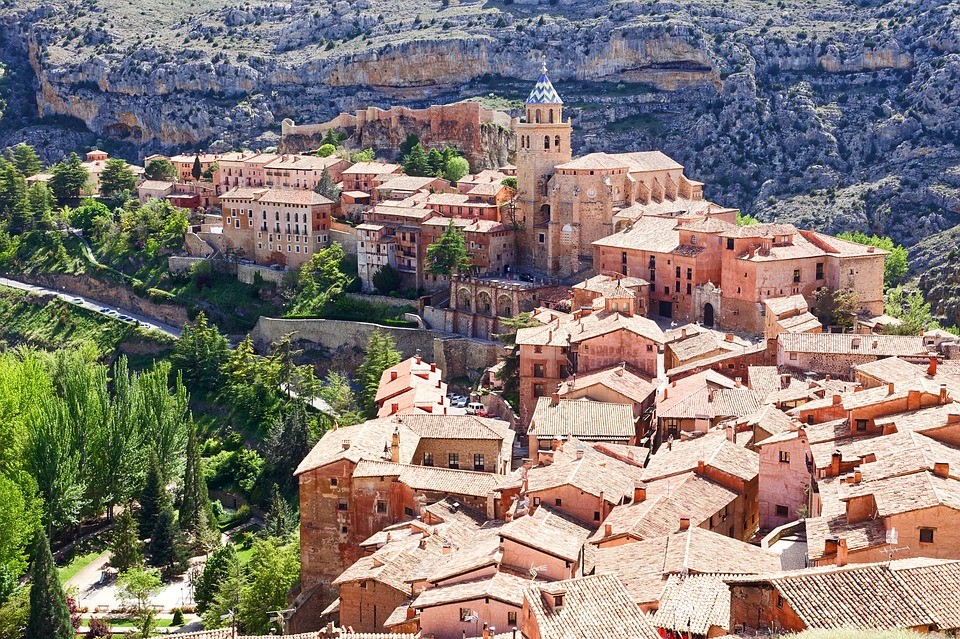
In the afternoon you can not miss a walk through Albarracín: a town that in the XI century was a taifa ruled by a king banished later by the Cid.
On the other hand, if you prefer to move around and do some sports, go to the Parador de Teruel; It has sports facilities such as tennis courts and a seasonal pool, where you can relax before savouring the typical Aragonese cuisine.
Day 3 - Jérica
Start your trip to Jérica. This small town, along with Mora de Rubielos, Rubielos de Mora and Teruel, was declared a historical and artistic group of this section of the Camino del Cid. Visit its Mudejar tower, it is very beautiful and the place where it is located is extraordinary. The climb to the tower is well worth the effort, as it allows you to cross the entire old town. The views from there are beautiful; In fact, you can see the "Turret", a place of defence that had the tower of Alcudia.
Day 4 - Castellón
Before arriving in Valencia, we recommend you visit the first of the three Valencian provinces that Rodrigo Díaz de Vivar went through during his exile: Castellón. You can not miss Villafranca del Cid for its landscape and artistic wealth, or the city of Sagunto, which would highlight its Roman ruins and its castle, considered one of the most beautiful in the Valencian community. To discover the gastronomy of this place, make a stop at the El Mirador de Sagunto restaurant. Here you can enjoy splendid views of the castle.
Spend an afternoon at El Puig
El Puig is the old town of Cebolla cited in El Cantar. Once there, both its history and its most symbolic places will reward you right away. Visit the old medieval castle, as well as the incredible Royal Monastery, then head towards the beach and watch the sunset while you drink something to the sound of the waves of the Mediterranean coast.
Day 5 - Valencia

The last stage of your trip will be Valencia. Only half an hour away, you will find the city that El Cid managed to conquer in 1094 and where he spent his last days of life. This place has an impressive artistic heritage and is waiting to show you its true essence, its more modern face, as well as ancient. When you arrive, you can choose between 3 options to go downtown:
By subway: with lines 3 (Rafelbunyol-Airport) and 5 (Marítim Serrería - Torrent Av. / Airport), it will take you about 25 minutes and the ticket costs 4.90€.
By airbus: the stops are Salidas Airport - Avenida del Cid (in front of the local police) - Bailen Street - Angel Guimera Street (next to Juan Llorens Street) - Avenida del Cid - Salidas Airport. The cost of the ticket is 2.50€ and leaves every 20 minutes.
By bus: line number 150 leaves the airport and stops at Paseo de la Pechina (Parque de Cabecera) - Avenida del Cid - Parque del Oeste - Bishop Amigó - Gran Vía Ramón y Cajal (Cervantes) - Angel Guimerá 48. The price is from 1, 05€.
We are here! The time has come to move to the accommodation, why not take a look at the Erasmusu page to see if there are interesting proposals? Without hurry but without pause, we continue the expedition through the streets of Valencia del Cid. The city itself is a potpourri of slopes: you will see from the Gothic style, to the Islamic, Visigothic, Roman, and even to the most modern, each more surprising. Next, a visit to the most representative place of the city, the Micalet, awaits you, but not without forgetting, of course, the cathedral, which was consecrated by Rodrigo from being a mosque to a cathedral.
Following the itinerary, you will find one of the proofs of the passage of the Arabs through the city: the Banys de l’Almiral. Besides, you cannot miss the Visigothic and Roman archaeological centre of the Almoina (2 minutes away), nor one of the Arab gates of access to the city at the time of El Cid (8 minutes walk north), near the towers and of the Serranos Bridge. Returning to the south, you have to go to the Silk Exchange, which belongs to the Gothic heritage of Valencia, and walk a bit to observe the statue of the Cid in Plaza de España. To complete your visit to Valencia, you must go to the Central Market and the City of Arts and Sciences, a modern touch to a beach walk. There we advise you to finish your tour savouring an authentic paella facing the sea in one of the restaurants of Playa de Arenas. We recommend the La Perla restaurant that, thanks to its position on the seafront, allows you to enjoy panoramic views of the Mediterranean.
We almost forgot! Before returning, you do not have to miss the opportunity to see the Parador El Saler, where you can stay for a few days and play golf in one of the best golf courses in the world, or take a boat trip through the Albufera: a wonderful natural park.
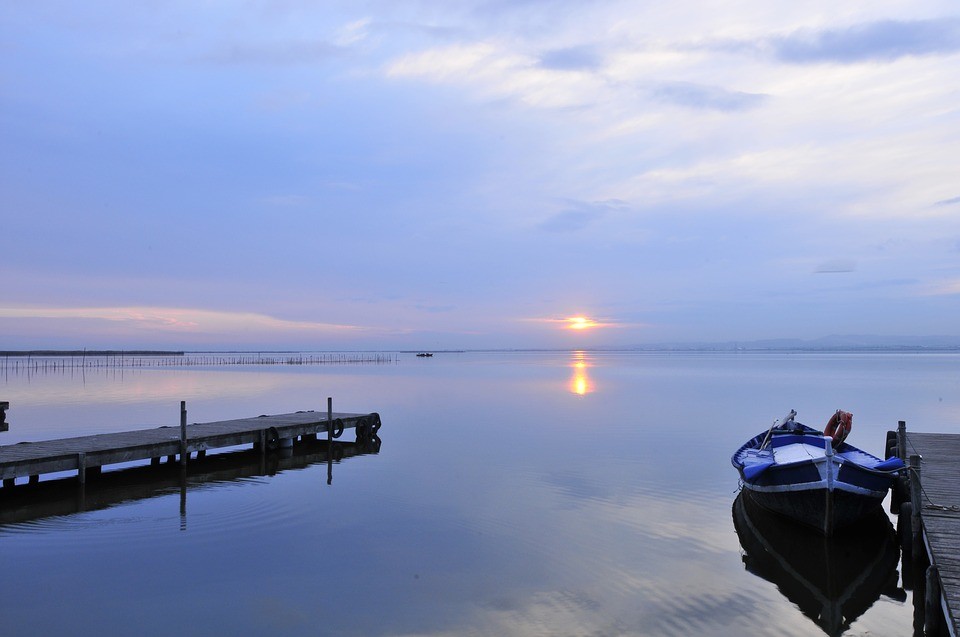
As you can see, the itinerary of the Cid road is very long. For this reason, it is divided into routes according to different themes and encompasses the most emblematic places of the work. Some routes are ideal for travelling by motorcycle, others for a walk and the next one is perfect for travelling by bike.
The road of El Cid by mountain bike (MTB)
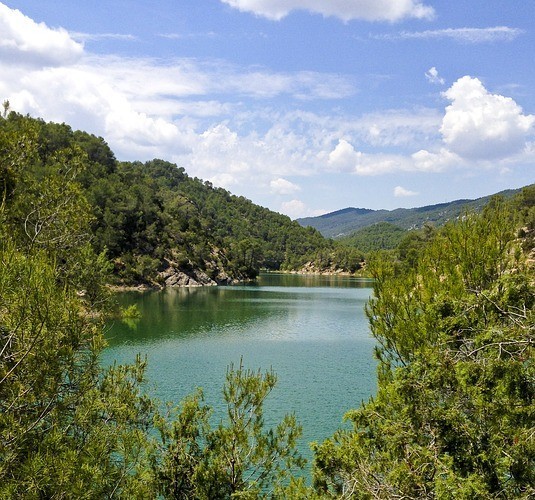
The magical territory of the Mastership
The Maestrazgo Ring route is one of the most attractive for the diversity and beauty of its landscape. It is located in the mountain range of the Maestrazgo, which crosses the provinces of Teruel and Castellón and covers towns of great medieval importance. The territory of the Maestrazgo remained under the reign of the Muslims until the XII century, when the kings of Aragon managed to seize it. They conquered it thanks to the help of the Knights Templar, who then received these lands as a reward.
El Cid is closely linked to the Maestrazgo since it was in this area several times. Although we do not know what exactly your itinerary was, we can deduce that it was in Culla, for example, a city known for its military importance. According to the historian Escolano (XVI-XVII centuries), he also arrived in Montanejos and Puebla de Arenoso, finally arriving at Onda, where he conquered the castle. Because of its abrupt geography and rigorous climate, the area remains one of the least populated in the region and offers an experience of direct contact with nature. Its high altitude makes this route the most difficult and intense all the way; suitable for those seasoned cyclists who love to live adventures and put themselves to the test.
The route is divided into three stages:
Rubielos de Mora - Iglesuela del Cid (65, 5 km)
Iglesia del Cid - Onda (109, 3 km)
Wave - Rubielos de Mora (66, 3 km)
Starting our way from Rubielo de Mora, an architectural complex with great landscape richness, we will cross the Sierra de Gúdar in this first stage, in the heart of the Maestrazgo. During the tour, two hard climbs await us, that of Sierra de Nogueruelas and that of Puerto de Linares, to finally descend to the Truchas river. However, we will find magical corners where the pine forests alternate with carrascas and junipers, and merge with terraced crops. During the second stage, we will travel a good part of the territory of the Alto Maestrazgo de Castellón. The landscape is dominated by a Mediterranean forest that extends over a limestone plateau crossed by rivers and ravines. The most pleasant part of this journey is to alternate the comfortable and bearable mountain roads with the busy crossing between crops and fruit trees. During the third stage, we will leave the flatlands of the Plana de Castellón to enter the Mijares valley for the first time. From here you discover an incomparable natural setting where the high Mediterranean mountain is combined with landscapes shaped by the river and animated by natural rafts.
Plan the trip
Weather
The climate of the region is characterized by cold and rigorous winters due to frequent snowfall, and wet autumns due to increased rainfall. Therefore, it is better to travel this route of the Cid road in spring and summer. Because of the high altitude of the territory, there are strong contrasts between day and night, so it is necessary to wear warm clothes and windbreaks.
How to get
The town is 64 km from Teruel, 114 km from Valencia, 242 km from Zaragoza and 462 km from Madrid. From Valencia: Rubielos de Mora is well connected with Valencia. It is possible to arrive by car on the A-23 motorway, take exit 73 to take the A-1515 until there. From Teruel: it is possible to take trains from the Teruel - Sagunto line that stop to the town.
Tips and recommendations
Water and food: always carry something to eat in your saddlebags. Do not forget to bring water either. In most villages you will find sources to refill your bottle.
Do not forget to bring a repair kit for any breakdown that may arise along the route. The more complete it is, the quieter you will travel.
Do not forget the helmet.
If you carry a mobile phone, don't forget to charge it 100%.
Accommodation: book your accommodation in advance.
Get your pass: the pass is a personalized passport with which you can get discounts of a minimum of 10% in more than 200 accommodations, with which you can also benefit from promotional offers. It is free and is requested at any tourist office on the route or at the Camino del Cid Consortium.
Do the Cid road on foot: enter this route in the villages of the history of Spain
The Path of Exile: from Burgos to Guadalajara
Here you have the perfect route to do your Cidian excursion... Why is it perfect? Well, because its level of difficulty is low, in addition to that you will be able to see beautiful sites without hardly moving a finger.
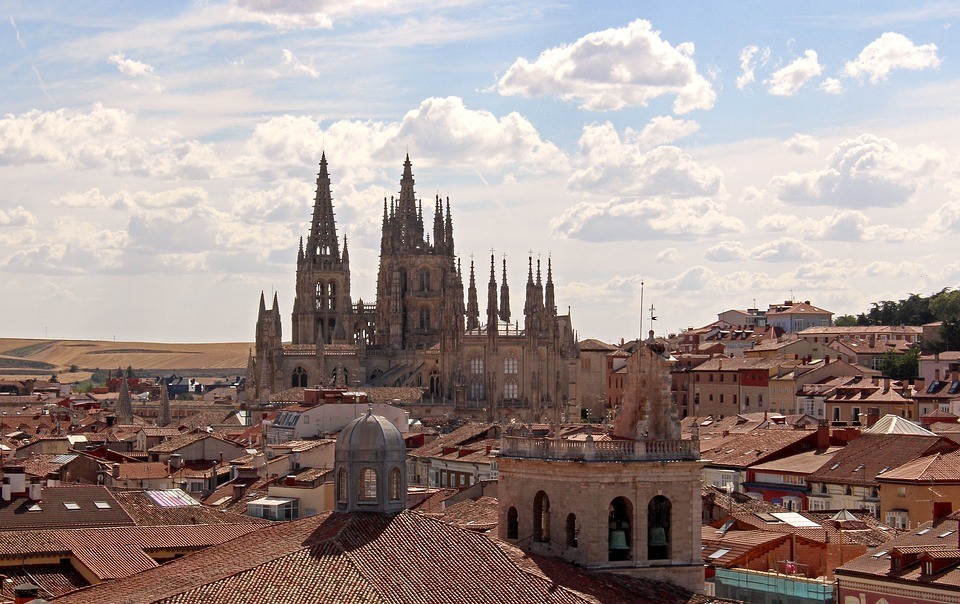
We will start on the Camino del Cid in Burgos, where you can see the bronze statue of the Cid and explore the area of Castilla. The city is also part of one of the stages of the Camino de Santiago, but it is still the city of Paris par excellence. Walking through its centre, you can see the Solar del Cid, a monument that is located right next to the castle of Burgos and witnesses its passage through the city. It is said that he had his house there and that, in the past, it was the most populated area of the city. Imagine the scene of his first banishment: the medieval hero leaves the city under what is now known as the Arch of Santa Maria. The important thing is that you do not miss the cathedral, because that is where the remains of El Cid lie, along with those of his wife. Once you have visited the wonderful medieval city of Burgos, you can start your trip! Leave the most urban part of the region to enter an unusual landscape, characterized by fields and rural villages.
If you want more detailed information, then you have to read the post about The beautiful city of Burgos.
Day 1
9 hours walk from Burgos to Covarrubias, passing through:
San Pedro de Carveña: you cannot miss its monastery. It is surrounded by green hills, and it is there that the bodies of Cid and Jimena were preserved until the War of Independence;
Modúbar de San Cibrián: a small town of 87 inhabitants that will leave you speechless through the valley that surrounds it.
Los Ausines: these are three medieval neighbourhoods. You have to see the chapel of Our Lady of the Castle and enjoy the views of the river and the green meadows.
Cubillo del Campo: the perfect place to pause in the middle of nowhere.
Mecerreyes: it is here that the highest sculpture of El Cid is found, a town that celebrates its history every year with the Carnival rooster party.
Almost 10 hours later you will arrive in Covarrubias; With less than a thousand inhabitants, you will fall in love with its buildings and landscape. It is full of medieval details and beautiful streets, but you can also enjoy the Arlanza River and its valley. It is worth visiting this town, it is the perfect place if you want to take some stunning photos.
Day 2
8 hours walk from Covarrubias to Huerta de Rey through:
Santo Domingo de Silos: from the name of the Lord who in the year 1000 turned the city into an important artistic and cultural centre. Cid himself made donations for the construction of his monastery, which today fascinates all the tourists who come to visit it. The details of his cloister, the objects he treasures and Mudejar-style paintings are just some of his many charms.
Peñacoba: this area stands out for its nature; The territory belonged to Cid and his wife.
Pinarejos: it is the ideal place to make a stop, since it is not a town, but a recreation area. Here you can rest and drink from the numerous sources and then head to Huerta de Rey.
One hour from Pinarejos you will find your last stage of this second day: Huerta de Rey. It is a village surrounded by the river and therefore very fertile, but above all very picturesque. You can not miss its surroundings and its characteristic centre. Also if you are travelling in July and you are there last week, you can attend the play "El Cid went through Huerta" and more medieval-style shows.
Day 3
8 hours walk from Huerta de Rey to Langa de Duero through:
Quintanarraya
Alcozar
Langa de Duero, as well as the other two stages, represents the perfect opportunity to get in touch with nature 100%, with its fields, mountains, trees and plain. Of course, you have to visit the Tower of Homage, the only remaining element of an old medieval castle. From there, the dawn will leave you speechless. Travel to Langa de Duero, take your picture from the castle and... Share it with us!
Day 4
8 hours walk from Langa de Duero to the Hoces del Río Riaza Natural Park through:
Castillejo de Robledo: walk through the streets of one of the most important cities of the Camino del Cid and visit its medieval castle, and even its Romanesque church.
This is one of our favourite areas. Make a getaway to the Natural Park that you will arrive in about 3 hours and take your mobile to take the best photos. We don't want to ruin your surprise, but be prepared to see the best hiking trails you can imagine.
If you have more hours, or better, more days at your disposal, head south to also travel the Camino del Cid in Guadalajara. Suitable for travellers who prefer to follow the footprints of El Cid on foot and who want to see the nature of this area of Spain at 360 °. If you want to visit a better-known area, then you have to opt for the Camino del Cid in Alicante. One option could be to start in Valencia, following the first part of our guide, then continue south and stop in the famous city of Alicante, which attracts many tourists every year. If you think that visiting such a natural and isolated area can be synonymous with problems in finding accommodation... I'm sorry, but you're wrong. As regards the apartments on the Camino del Cid, it is very easy to organize a stay, of long duration or not, in more central or peripheral areas, in addition to the offer being very wide. You can choose between camping, hotels, cottages, apartments, hostels and hostels. Don't forget that by presenting your pass you can get discounts!
You can also find online the list of affiliated accommodations.
Well, what are you waiting for? By motorcycle, mountain bike or on foot, the time has come to make a different trip. A trip where you explore, enjoy, play sports and breathe history. Medieval history, the history of Mudejar Spain, but above all, the history of Cid.
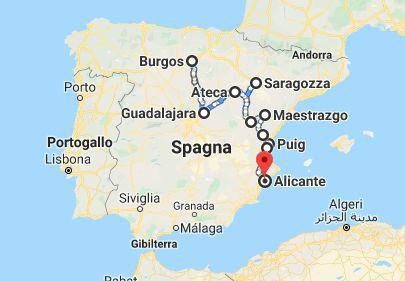
Camino del Cid map
Do not forget!
If you are looking for accommodation, we can help you. Erasmusu offers hundreds of options to choose from spacious rooms, studios, university residences and apartments so you can find your perfect home online, even before arriving in the city.
If you liked this article, don't forget to follow us on Facebook, Instagram and Twitter!
Photo gallery
Content available in other languages
Want to have your own Erasmus blog?
If you are experiencing living abroad, you're an avid traveller or want to promote the city where you live... create your own blog and share your adventures!
I want to create my Erasmus blog! →













Comments (0 comments)